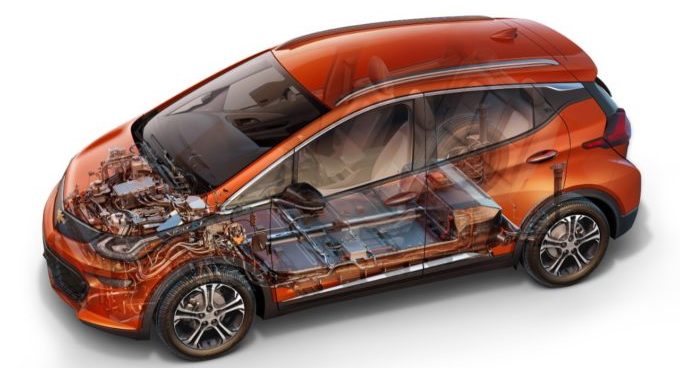By Steve Pawlett
As the automotive industry experiences a rapid shift towards sustainable mobility, the prevalence of battery electric vehicles (BEVs) is steadily increasing. With this transition, progressive automotive repair shops are beginning to adapt to the changing landscape to meet the growing demand for servicing and repairing electric vehicles.
The AAPEX 23 event, held in November in Las Vegas, Nev., hosted a panel discussion addressing the benefits and challenges facing repair shops looking to move into this new automotive service category. Speakers included Carlos Thimann, partner, PwC Strategy; Akshay Singh, partner, PwC Strategy; and Kunal Arora, director, PwC Strategy, who shared highlights from their latest BEV industry report, which shares three potential outcomes based on how quickly BEVs are adopted.
While the focus of the panel was on the impact on the U.S. industry, many of the impacts will be felt in Canada.
High rate of adoption:
- Exceed ZEV mandate: CA & ZEV states adopt fully by 2030.
- Infrastructure: Investment will significantly ramp up in the next two years.
- Significant battery price drop: Battery prices continue to decrease (continuing the trend of the last five years) and to enable TCO (total cost of ownership) parity without incentives.
Mid-rate adoption:
- Meet ZEV Mandate: CA & ZEV states meet planned targets.
- Avg. Infrastructure: Investments such as NEVI ramp up by 2030 to moderately help ease range anxiety.
- Mid-battery price drop: Battery prices stabilize till 2025, and drop beyond that at a slower rate than expected.
Low-rate adoption:
- Slow EV Infrastructure: Failure to deploy sufficient fast charging stations.
- Limited Model Availability: OEMs shelve plans to introduce models in the mass market segment.
- High Battery Prices: Battery prices will increase over the next three to five years due to supply chain disruptions, tech plateau and inflation.
Hybrid (PHEV and HEV) sales will continue to grow by the end of the decade; however, the role of hybrids will be reduced as BEV sales grow much faster.
The parts market will continue to grow significantly as the complexity and cost of replacement components increases. Electrification and ADAS will be the key growth drivers as the car parc transitions toward newer vehicle technologies.
An average service provider must invest between $80K and $270K over the next few years to prepare for the BEV transition.
Estimated investments required for small to medium-sized service shops to support and maintain competitiveness for BEV demands:
Technician Training & Certifications for EVs $2,500 – $10,000
Safety Equipment $5,000 – $15,000
Level 3 Charging capabilities (50-150 kw) $40,000 – $100,000
Battery testing equipment $10,000 – $20,000
Diagnostic tools $7,500 – $15,000
Lift modifications & Battery handling equipment $15,000 – $40,000
Test Vehicles/ Test Fleet $30,00 – $70,000
Service providers need to be prepared for the inherent headwinds the transition to BEV may bring.
Rapidly changing BEV market outlook:
- High volatility of BEV penetration rates as BEV market forces shift supply and demand.
- Substantial differences in adoption across different regions (e.g., ZEV vs. non-ZEV states)
- Demand sensitivity to changes in legislation/incentives.
- Funding BEV investments (enhancements to shop/training) with current ICE profits/returns.
More competition among service providers:
- Competition from dealers as control increases over diagnostics, parts availability, and software updates.
- Increased dependence on OEMs as BEV shifts from component-based to system-based architecture.
- Pending Right to Repair legislation (locally and federally).
Complexity of BEV technology:
- New technical expertise is required for new technologies, diagnostics, and software integration.
- Warranty, regulatory and safety-related concerns around new BEV and ADAS technologies.
- Access limitations to new tools and parts.
To stay ahead of the market, service providers must:
- Establish relationships with BEV manufacturers, dealers, and suppliers to access parts, tools, and technical support.
- Support Right to Repair through local officials, to support legislation individually and within the auto care networks.
- Diversify service offerings to balance traditional ICE and BEV services and maximize your potential market.
- Increase customer convenience, such as mobile repair and maintenance, to optimize comfort for BEV owners.
- Prioritize customer satisfaction to maintain strong, lasting, repeating customer relationships.
- Invest in training and certifications to stay current on technologies and service procedures.
- Invest in technology to stay current on the latest tools and software for BEV maintenance and updates.
- Invest in safety measures to prioritize safety among employees and customers around high-voltage equipment.
Preparing an automotive repair shop for the era of electric vehicles requires a strategic approach encompassing equipment upgrades and staff training. While the initial investment may seem substantial, the long-term benefits, including increased customer satisfaction and a competitive edge in the evolving market, make the transition to electric vehicle servicing a wise investment for the future. By staying ahead of the curve, automotive repair shops can position themselves as leaders in the emerging era of sustainable transportation.


0 Comments